Who likes riding at night time?! If you’re the type who eschews Zwifting the indoor trainer for months on end, and the end of daylight savings time is a time to rejoice, you might be the type of rider who continues racking up the miles/kms after night fall during the cool winter months. At least that’s what I do, but I reside in sunny northern Florida for much of year; zero snow laying about and a nice break from the oppressive heat of a humid summer! Thus, good lights are important, and like everything else over the past ten to 15 years, electronics have improved. Gone are the days of halogen, HID lights and mega bottle cage battery packs. There was a time when I used to build my own LED lights for cheap, but that is no longer a fiscally sound proposition.
These improvements in technology have seen plenty of integrated light and battery solutions hit the market, but some are better than others. Ravemen, not a household name, but whose product I have ridden and reviewed in the past, have a neat and compact solution that features the “world’s first bike light with high beam and low beam, a simulation of an automobile’s headlight design”.
“Combined with all advanced optical and electronic technology, the Ravemen PR1600 is your best choice for trail riding, road cycling and commuting.” That’s a pretty broad and sweeping statement, but the dual-LED configuration with a reflector and lens in the same housing means Ravemen has tweaked the beam(s) to provide a good all-round balance.
Ravemen PR1600 Features & Specifications
Pictured above is the Ravemen PR1600 model, which as the package and name indicate, has a potential 1,600 lumens available at one’s fingertips.
As stated earlier, Ravemen has tweaked the beam pattern, intended to provide effective coverage with one or both beams firing.
Unboxed, the Ravemen PR1600 is a small package as indicated by my hand and diminutive, optional wireless remote. The light housing feels solid and well-made with a claimed weight of 220 grams including the built-in battery. The housing is of aluminium construction, hard anodized, and a durable plastic material elsewhere. The buttons on top of the unit don’t feel cheap and are simple to operate.
Above, the PR1600 came in five grams less than advertised, always a nice bonus.
Pictured above are the package contents which include:
- Ravemen PR1600 light body
- Wireless remote control and included CR2032 coin cell battery
- Handlebar mount
- USB C-type connector
On the scale with everything ready to roll (the wireless remote is optional), you’re looking at 249 grams for the Ravemen PR1600 system.
Above, underside of the PR1600 light body and its bike mount interface.
Above is the PR1600’s dual beam configuration with a reflector and lens, with light provided by 2 x Cree XM-L2 LED’s. In my experience, Cree has been the market leader for LED technology. The lens-filtered LED is designed to be the “low beam”, perfect for road / commuting and intended to keep the projected glare down, whilst the reflected lens is “high beam”, designed to be far reaching and suited better to off-road… or gravel roads in my case.
At the rear of the PR1600’s body are two ports, well protected by weatherproof rubber flaps.
The left-side port can be used to charge one’s phone or other device, whilst the right-side port is for charging or extending the light’s run-time with an external battery. I love the extended run-time feature (no special proprietary battery required). Inside the housing resides a 6,000mAh Li-Ion 3.7V rechargeable battery.
Above, the diminutive wireless remote, powered by the supplied CR2032 cell battery. This little treasure straps to one’s handlebar in just a second or two. Its operational range is under a metre.
Above, light body attached to the supplied mount and wireless remote strapped to the handlebar, ready to roll. The light’s mount uses an M4 bolt (3mm allen key) to affix to the bar and is compatible with 31.8mm and 35mm handlebars. The Garmin 830 in the photo give you another perspective of size. Before you ask, “why aren’t you running the Garmin on an out-front mount?” Well, the light emitted from the PR1600 would blind the Garmin’s screen.
Above, hand included for size reference. The remote is purposely mounted upside down, my personal preference. You can power on/off the light, switch brightness levels and run single or dual beams.
Alternatively, the buttons on top of the PR1600 accomplish the same task as the wireless remote and they glow in the dark. Handy!
Above, how the PR1600 looks in charge mode. The LED window features a hypnotic, animated pattern to keep you amused as you wait.
The LEDs on the top of the light body display approximate remaining run time, recalculated anytime you switch between light levels / modes. This is a super handy feature and mostly eliminates run-time anxiety… the icons below the run time indicator are the light’s modes, “road biking” mode, aka the right side single low beam LED, and “mountain biking” mode, aka both LED’s.
Once the PR1600 has been powered on by pressing the Power on/off button (the larger of the two) for 1.5 seconds, switching between light modes is accomplished by pressing the “Menu” button, the smaller of the two. The Power on/off button also serves to switch between running one LED or two LED’s. With that comes another set of light modes you switch between.
Pictured above are the various modes and brightness levels available from the PR1600. As a more detailed FYI, “road biking” denotes a single LED in use (the lens filtered LED) and “mountain biking”, is both LED’s in use. Rapid Flashing is good for commuting or daytime running). I did not test the Emergency mode.
Beam Shots & Run Time
Single-LED Mode aka “road biking”
Above, the PR1600 single LED aka “road biking” mode, High – 800 lumens. I have no way of determining if the those lumen counts are accurate, but the cool white of the Cree XM-L2 combined with the “low beam” lens provides plenty of up-close detail. I really like this broad, even distribution of light.
Above, single LED aka “road biking” mode, Mid – 400 lumens.
Above, single LED aka “road biking” mode, Low – 200 lumens.
Above, single LED aka “road biking” mode, Eco – 100 lumens, best saved for trail-side repairs, flat fixes and so on.
Dual-LED Mode aka “mountain biking”
Above, the PR1600 dual LED aka “mountain biking” mode, High – 1,600 lumens. This mode throws a ton of light near and far, with an excellent spread. To be honest, this mode was overkill on gravel roads unless I was hauling arse on a hill / descent.
Above, the PR1600 dual LED aka “mountain biking” mode, Mid – 800 lumens. This was my go to level for playing around on gravel roads at night time. Plenty of light, plenty of detail near and far, and a run time of two hours. As my rides generally last 2.5 to three hours, I conserved battery by running in dual LED mode, Low (see below) on pavement sections between gravel sectors.
Above, the PR1600 dual LED aka “mountain biking” mode, Low – 400 lumens. This mode served me well for transitory sections of pavement between gravel sectors, and bike errands around town.
Run times were a little shorter than advertised. I ran High and Mid on the dual LED mode until the battery was depleted, with the light running out of battery about 10 minutes shorter than advertised. But as I alluded to earlier, switching between modes and having the option of an external battery to draw upon, I had no fears of running out of light.
Conclusion
The Ravemen PR1600 is a really nice bicycle light. The remaining battery run-time feature is superb, the light body is well made, it sheds heat well and is compact and lightweight. I love the beam pattern emitted by this light, which has now become my go to light for road and gravel cycling. Run-time is excellent considering how much light is emitted across the landscape, and the option to plug in any USB external battery is awesome. The wireless remote is a really nice touch, but not something I used all of the time. Regardless, it allowed me to keep my hands firmly planted on the handlebars during spirited evening gravel rides.
Priced at about $125.00 USD depending on where you look, the Raveman PR1600 is a great deal, especially when you consider the functionality of the wireless remote, multiple light modes, and high quality construction. An optional GoPro type mount to sling the PR1600 below one’s handlebars is also available. I love this light.


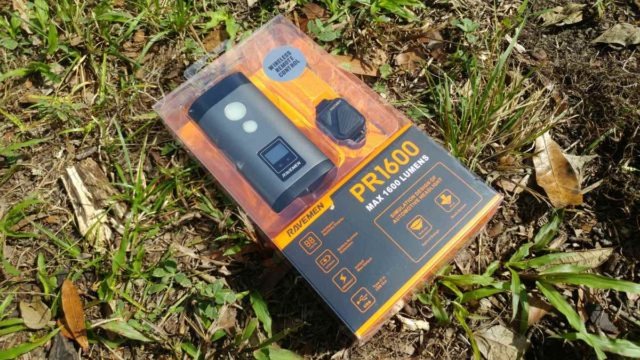
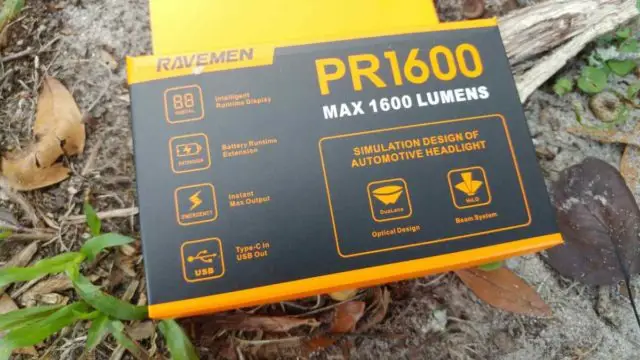
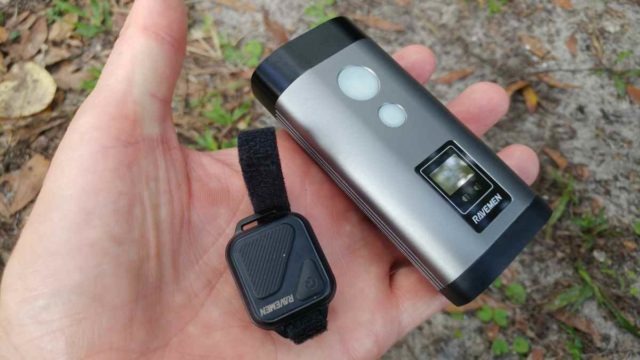

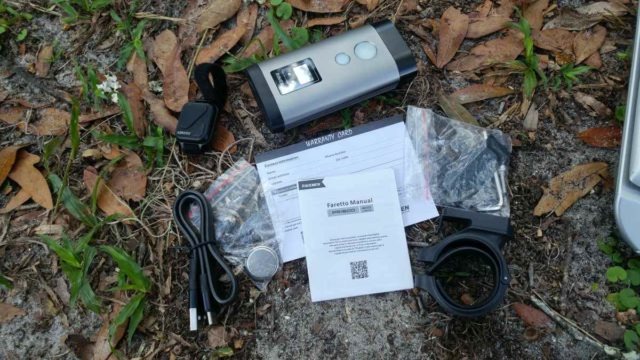
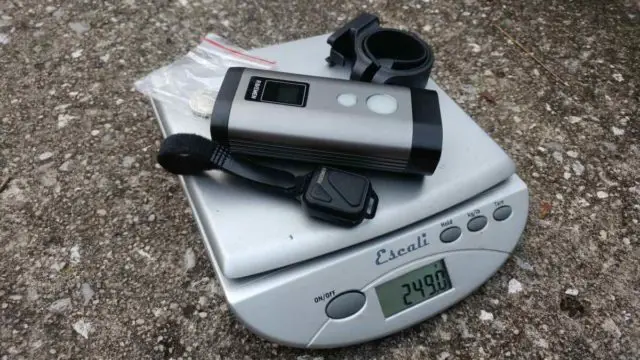
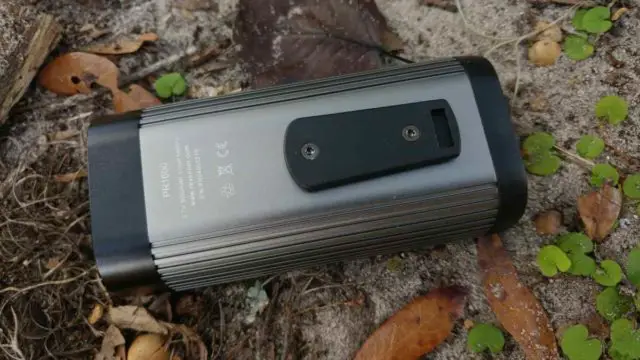
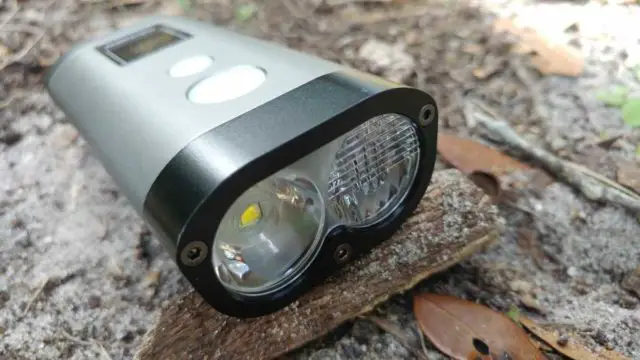
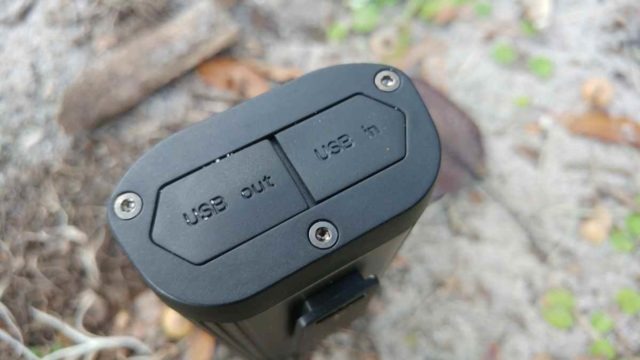
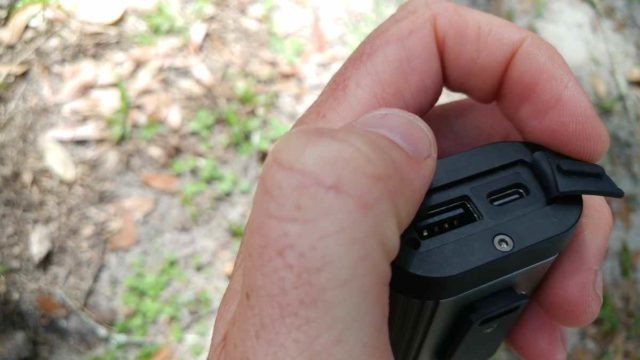
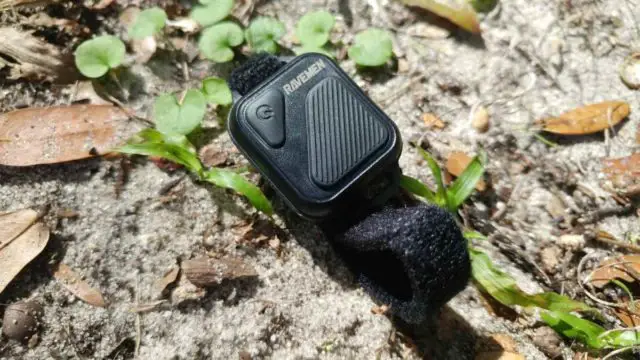
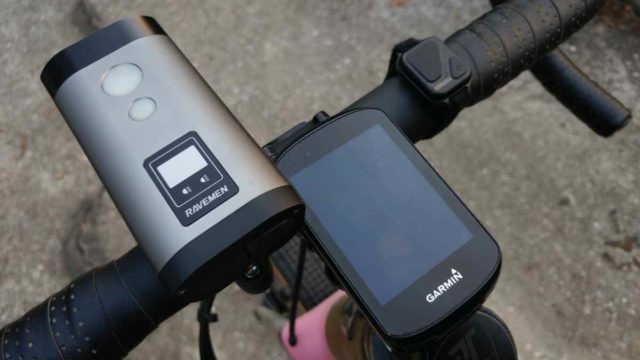
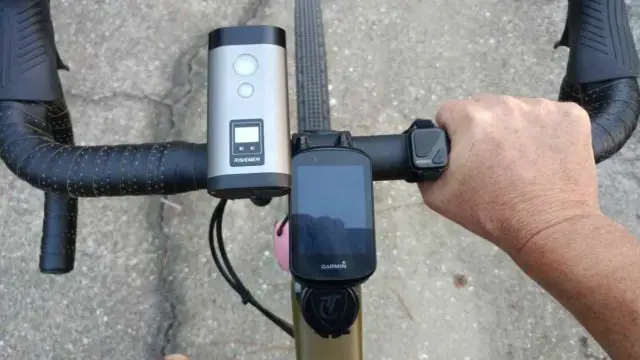
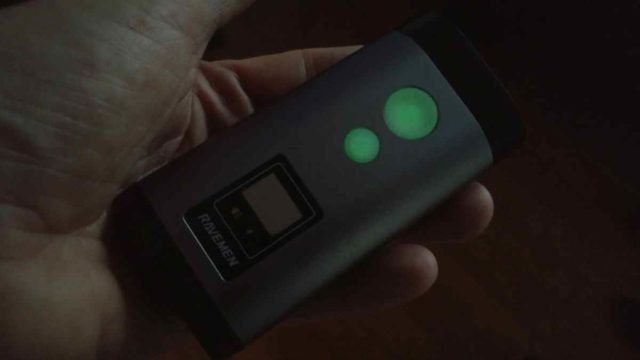
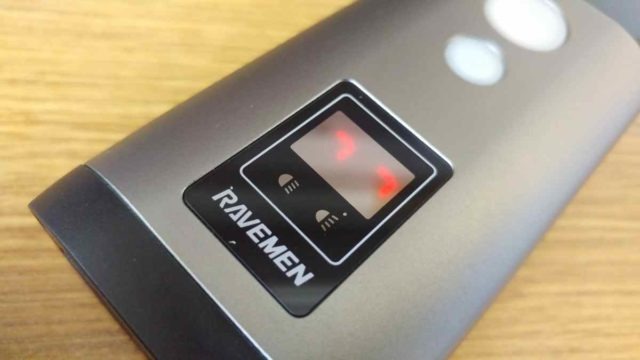
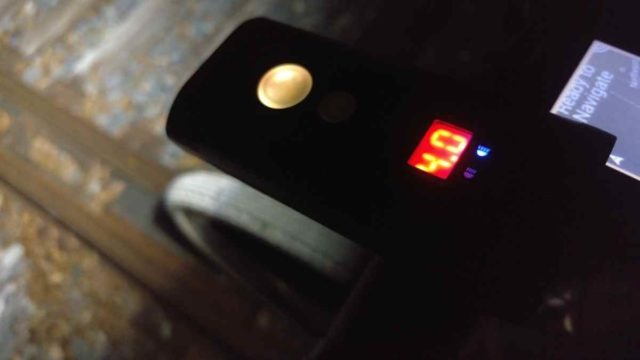
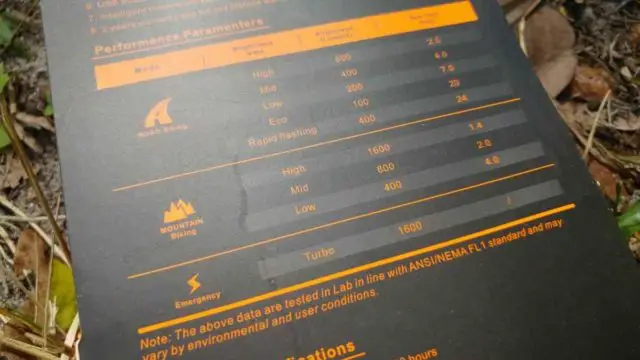
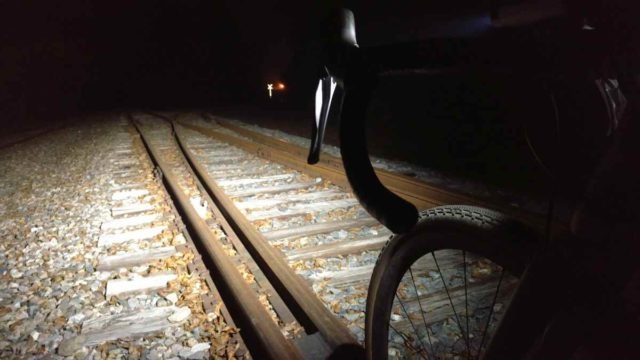
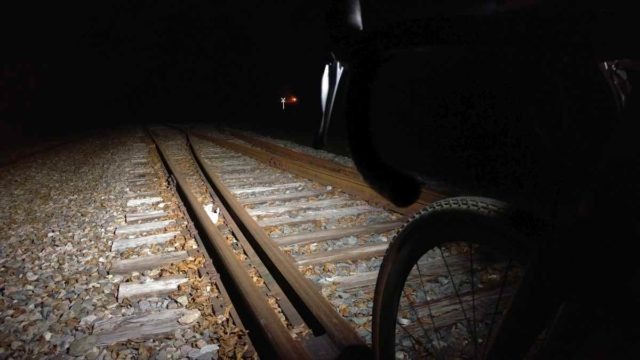
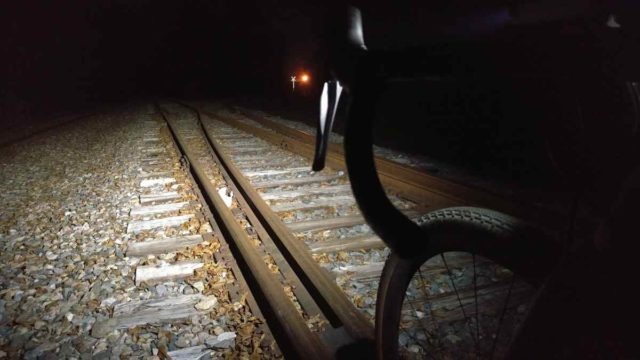
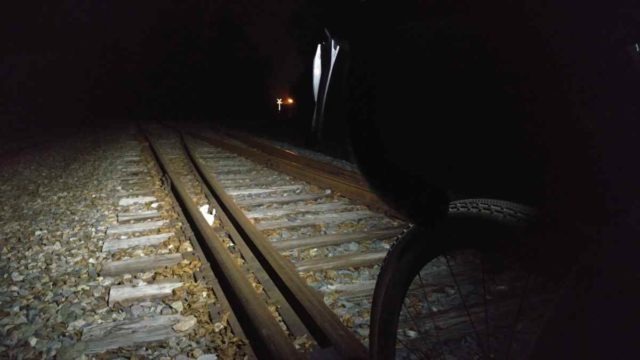
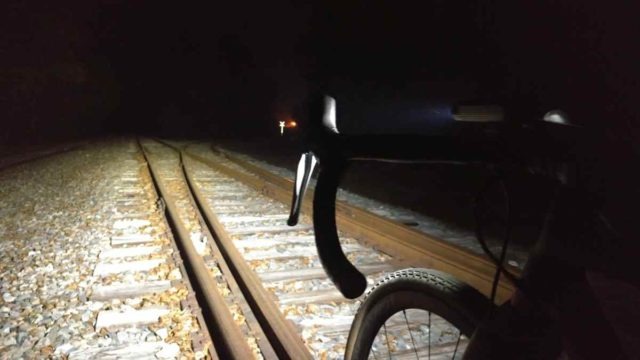
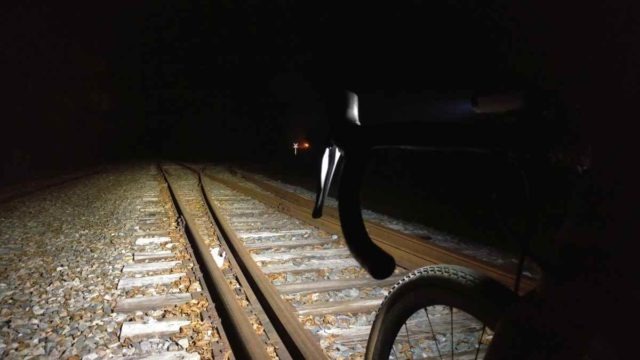
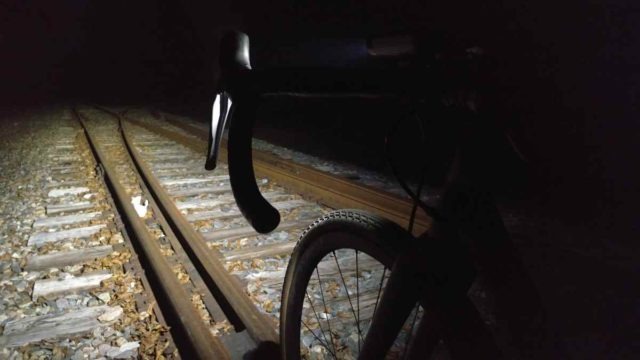
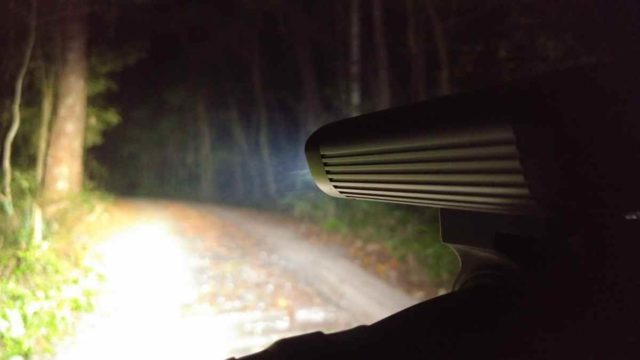
What’s the burn-time on the 1600 lumen setting?
It was about 5 minutes less than advertised.
Will the light run while charging?
I think it’s about time that manufacturers of high-output lights get on the bandwagon of appropriately controlling/lensing the light not to blind others (like the Germans do). So I appreciate that feature. What happens to the light dispersion when you flip it upside down on a GoPro under your Garmin? That’s the other part of the puzzle.
I don’t have such a mount to test at this time.
Nice looking light and nice features.
DO not like that fact that it does not look like I can mount it below my garmin using a gopro type mount.
Then if you could mount it on a gopro mount it would be upside down so would that flip the light pattern also?
I have been looking at a replacement light and so far I really like Gloworm lights. They have different lens that can be swapped to give you different light patterns.
Even those lights have come cons too.
Upside-down mount @ https://www.ravemen.com/product/AUB01.html
Defeats the purpose of a shaped beam IMO. Not a problem for those who will not use the low setting (much).
Interesting that Raveman offers an optional “Upside-down bracket” for GoPro style mounting under a GPS. To me that seem to defeat the purpose of a shaped beam.
The best setup is both bar and helmet light. I say this as one who rides up to 200 miles/week at night. Again, to me, shaped beams are relatively pointless for helmet lamps.
That said, 1.4 hour (advertised) runtime at 1600 lumens isn’t bad – on par with Light & Motion Urban series lights which are about the same price. The L&M products lack wireless remote and ability to extend burn time with an external battery however. I can push a L&M Urban 900 to over 3 hours if I turn it down when climbing or slow rolling. An Exposure Strada 1200 can be pushed to over five hours by turning it to lower settings when not needed. It also works with external batteries and has a wired remote but is close to $400.
With a sufficiently large external battery the Raveman could theoretically run all night. Add in a wireless remote and the fact that I will probably not use the low beam, for the prices I’m seeing online it begins to look very attractive. I might pick one up to check out.
Thanks for putting this out there JOM.
-Tim-
I bought one of these a couple of months ago. I’m not overly impressed and, if I’d known then what I know now, I wouldn’t have got it.
Downsides:
Run time on high is very short and certainly won’t last all night. Using an external battery is a useful feature but I’m not sure I’d want to use a USB connector in rainy Manchester. A standard bayonet connector would have been a better solution (and it would have allowed me to use the battery packs that I already had).
It’s a shame that you can’t take the batteries out and replace them on the road (or in the cafe).
I wanted a long range beam for fast (road) descents it; doesn’t throw far enough IMO.
The “dip” beam is good but you have to cycle through the settings via the remote after turning the “high” beam off. I want to set the light for slower speeds or when there are cars/bikes pedestrians coming the other way then, when it’s clear, I want to use the high beam. More traffic, press the remote and “dip” the light. You can’t do that.
Most stupid thing of all, the mount puts the CofG of the light ahead of the clamp so it can rotate forwards over big bumps no matter how tight the clamp is.
I’m about to look if I can send it back to get a refund.
The search for the perfect light continues………………….
But why would you want to run the light on high all night? Absolute overkill and pretty obvious that the run time would be short. I mentioned the shorter runtime in my review. I experienced none of the rotation issues you’re talking about and I rode it on gravel roads, potholes, washboard and so on. Want the perfect light? Make one yourself… that’s what I did before it became fiscally unfeasible.
Good luck!
OK, clumsy use of words. I want to use it all night with a bright “dip” and max “high” but it won’t do that. Not being able to change batteries mid-ride makes it more of a problem.
I do several Friday Night Rides to the Coast a year. It’s a UK thing. See here:- https://www.fnrttc.org.uk/ If I do a London based ride late or early in the year, I need to ride into Manchester to get the train (30 minutes), ride to the start (30 minutes) then do the ride proper (8 hours). Most of this riding is in the dark so I need lights. On 35mph descents, I need more illumination than this thing dishes out although I say that for all the lights that I have. Have a look at ~57 seconds in on this:- https://www.youtube.com/watch?v=V-FtxXkm7qg It was dark and lashing down.
I too have ridden a lot of rough surfaces with the light but mine still slips from time to time despite how tight I try to clamp it. I also have a Shockstop stem (partly based on your reviews) and I would expect that to damp some of the shocks.
Make my own lights ? Don’t have the know-how, talent, equipment or motivation. I may try Fenix torch with a remote on/off switch. A one trick pony but long “throw” and easy battery replacement mid-ride.
It’s the remote switch I’m really after. I want long range lighting, I don’t want to dazzle pedestrians, bikes of cars but I don’t want to take my hands off the bars to press a switch or move a light down. I want to keep my hands on the “controls” and move a finger/thumb. Bit like my car.
Got it, no worries and thanks for chiming in. I was sort of joking about making your own lights, which was something I used to do. So time-consuming and in the end, the costs and hassle factor don’t really make it worthwhile. You definitely have a serious requirement for lights versus the average consumer… but with more and more people riding overnighters and multi-days, a simple way of extending run-time and charging on the fly are needed.
I reviewed the Indigo 5 a couple of years ago, which is still a light I regularly use. I don’t know if it’s suitable to your needs, but they are available now for super cheap at http://indigo.lighting
Good luck!
The Indigo 5 is a bargain. I have used it is my main light on long Audax for 3 years. Great beam even on low. Turned on with a long press it just cycles through low med high so you don’t have to go through the flash modes. The big battery pack easily goes though a night. I used 2 of them and a couple of single batteries for PBP 1200km. The single batteries are 26650’s . Not all will fit but the Keeppower ones do and are inexpensive.
The 6,000mAh battery is all well and good, but the article does not state if it is user replaceable.
I want a light that lets me carry a spare battery for either an extended bicycle tour. A user-replaceable battery would also help avoid being forced to replace a serviceable light just because the battery failed, which increases the amount of toxic waste we generate.
The battery is user-replaceable if you pull the housing apart, but sans the convenience, you are seeking. If you read the article carefully, you will have noticed you can utilize an external battery to extend the runtime of this light.